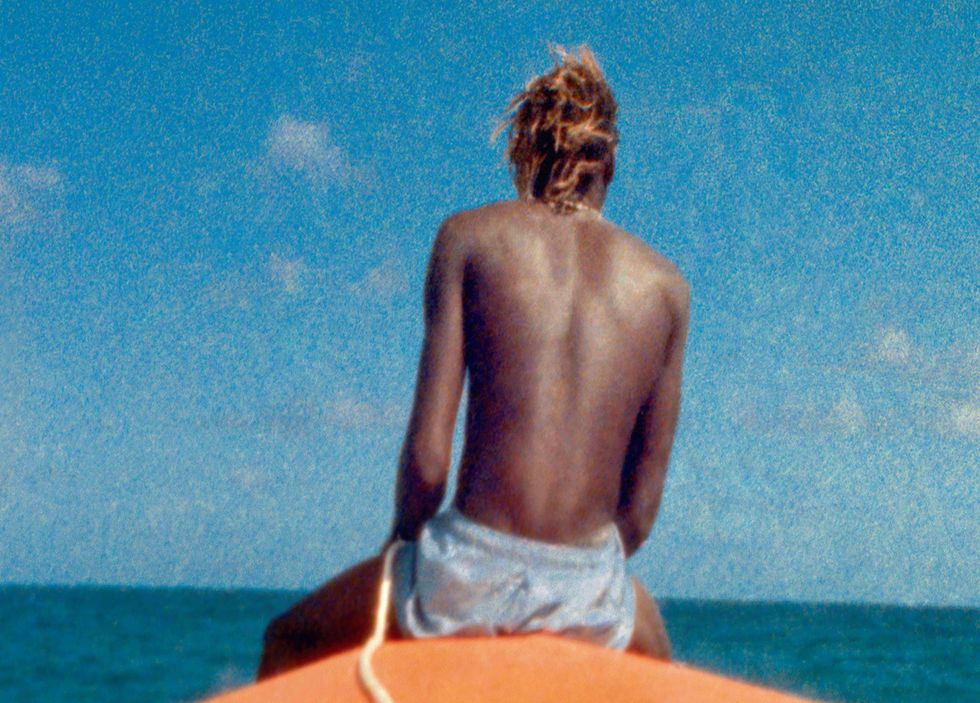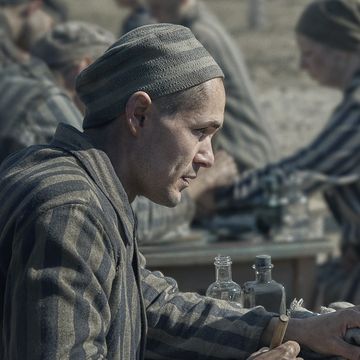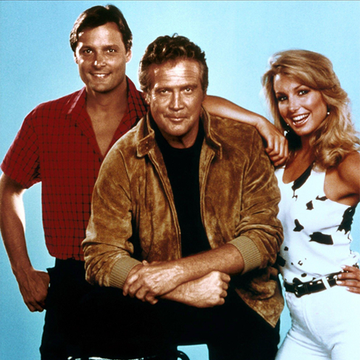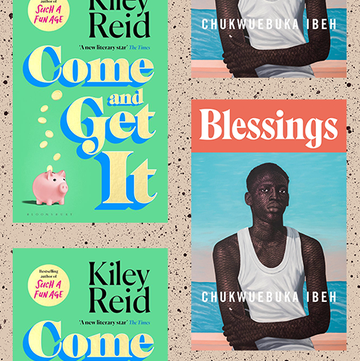There's a point about five minutes into '7th Nov. (2001)', a 23-minute video work on display at Tate Modern's new show of work by the British artist Steve McQueen, who has won both the Turner Prize, in 1999, and a Best Picture Oscar for his third feature film, 12 Years a Slave, where you realise there's no way in hell you're going to leave before it's done. The film is a single shot of the top of the shiny head and shoulders of McQueen's cousin, Marcus, as he recounts – in astonishingly clear detail – the day he shot his brother, John. The story is truly harrowing, and Marcus's telling unbelievably vivid, and as you watch the image before you, though it is unchanging, it starts to morph in your imagination from the figurative (here is a body on a gurney; here is a patient in therapy) to the abstract (here is a mountain range of skin and muscle, Marcus's own body now a weight, a mass, that is at times unbearable).
This, of course, is not how one normally feels when an artist or curator chooses to include video work in a show. It's often hard to get excited by those little box rooms off to the side of an exhibition space, perhaps sealed off by a heavy curtain, into which you pop your head for a few obligatory seconds, trying to let your pupils adjust, before returning to the more immediate gratification of, say, sculpture or painting. (You can see all of it! All at once!) In McQueen's show, however, which has just opened at the Tate Modern, it is the sculpture that you'll want to skip (to be fair, there's only one): the video work is urgent, essential and, in both a physical and critical sense, unmissable.
The first room of the show, painted a sombre grey, contains only two huge screens: one is suspended from the ceiling, another rises from the floor. Such is the majesty of their scale that they command the space as a sculpture might, or perhaps even a monument, and speaking of which: on the suspended screen is 'Static', a 2009 video work, seven minutes long, shot from a helicopter that is circling the Statue of Liberty, soon after it reopened after 9/11. Up close she looks grim-faced, a little streaked and shabby, but it is the soundtrack that is so arresting: the angry drone of the helicopter, like a mechanical mosquito, that Lady Liberty looks like she has half a mind to swat away. On the other is 'Once Upon a Time' from 2002, a slide show of images selected by Nasa in 1977 to be blasted off into deep space on the Voyager I and II missions, to show anyone (anything?) who happened upon them just what life on Earth is like. There are pictures of white picket fences, Jane Goodall observing her chimps, craftsmen at work; no suffering, no violence, no war. Both works ask us – force us – to think about the stories that humanity likes to tell itself about itself, the values we like to think we espouse and, of course, the myriad ways in which those stories deceive.
There's a lot of confronting to do generally at this exhibition, something that anyone who has seen McQueen's films, including 12 Years a Slave and 2008's Hunger, will know he is never shy to demand. In two 16mm film works made five years apart but shown together, 'Cold Breath (1999)' and 'Charlotte (2004)', McQueen manipulates the body, his own (specifically his nipple) in the first, and the face of the actor Charlotte Rampling in the second, in a way that suggests tenderness and sensuality that has the potential to tip into brutality at any moment. There's also 'Girls, Tricky (2001)', a strangely claustrophobic film of the Bristol musician Tricky letting rip in a recording studio, and 'Ashes (2002 - 15)' which, like '7th Nov. (2001)', tells a matter-of-fact story of a killing, revelling in the living body of the victim, a handsome 25-year-old Grenadian man called Ashes, and alluding to its disintegration, as we watch the stone mason carving the lettering of his tomb.
But there's one work that hits the hardest: 'Western Deep (2002)', shot at the world's deepest goldmine, the TauTona Mine in South Africa. We watch the men descend down, down, down into the bowels of the Earth, to work in near darkness and temperatures that can reach 90 degrees celsius. To a soundtrack of groaning, clanking, heaving mechanical noises, we watch these men and their bodies – almost all of them black bodies – and sense their fragility and, as far as the machine of commerce perceives them, their expendability. As the digital image break down into speckles – unable to cope with the lack of light, or maybe the hellishness of what it is being asked to represent – it is impossible not to try and grasp onto the pixels, to pull them back into clarity. It is impossible, in fact, to breathe. The medium is the message in McQueen's show, and it is masterfully delivered.
Steve McQueen runs from 13 February to 11 May at Tate Modern, London
Like this article? Sign up to our newsletter to get more delivered straight to your inbox.

Miranda Collinge is the Deputy Editor of Esquire, overseeing editorial commissioning for the brand. With a background in arts and entertainment journalism, she also writes widely herself, on topics ranging from Instagram fish to psychedelic supper clubs, and has written numerous cover profiles for the magazine including Cillian Murphy, Rami Malek and Tom Hardy.















